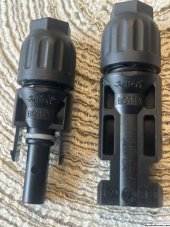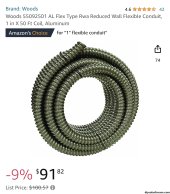- If any PV wiring inside a structure need to be inside metal conduit, at what point can the wires exit the conduit for the final connections to the solar controller? For example my victron 250/100 simply has two screw terminals for the pv input.
- My understanding from the victron manual is that you must use wire with a high strand count for proper connection:
"• Use flexible multi-stranded copper cable for the battery and PV connections.
• The diameter of the individual strand of the cable used should not exceed 0.4mm (0.016 inch) or have a
surface area exceeding 0.125mm² (AWG26).
• The maximum operating temperature is 90°C (194°F).
• For MC4 models only: The maximum current rating of a MC4 connector is 30A.
• A 25mm² cable, for example, should have at least 196 strands (class 5 or higher stranding according to
VDE 0295, IEC 60228 and BS6360). An AWG2 gauge cable should have at least 259/26 stranding (259
strands of AWG26). Example of suitable cable: class 5 “Tri-rated” cable (it has three approvals: American
(UL), Canadian (CSA) and British (BS)).
• In case of thicker strands the contact area will be too small and the resulting high contact resistance will
cause severe overheating, eventually resulting in fire."
Thus a household 10/2 MC cable would not be acceptable for the connection to the solar controller, is that correct?




